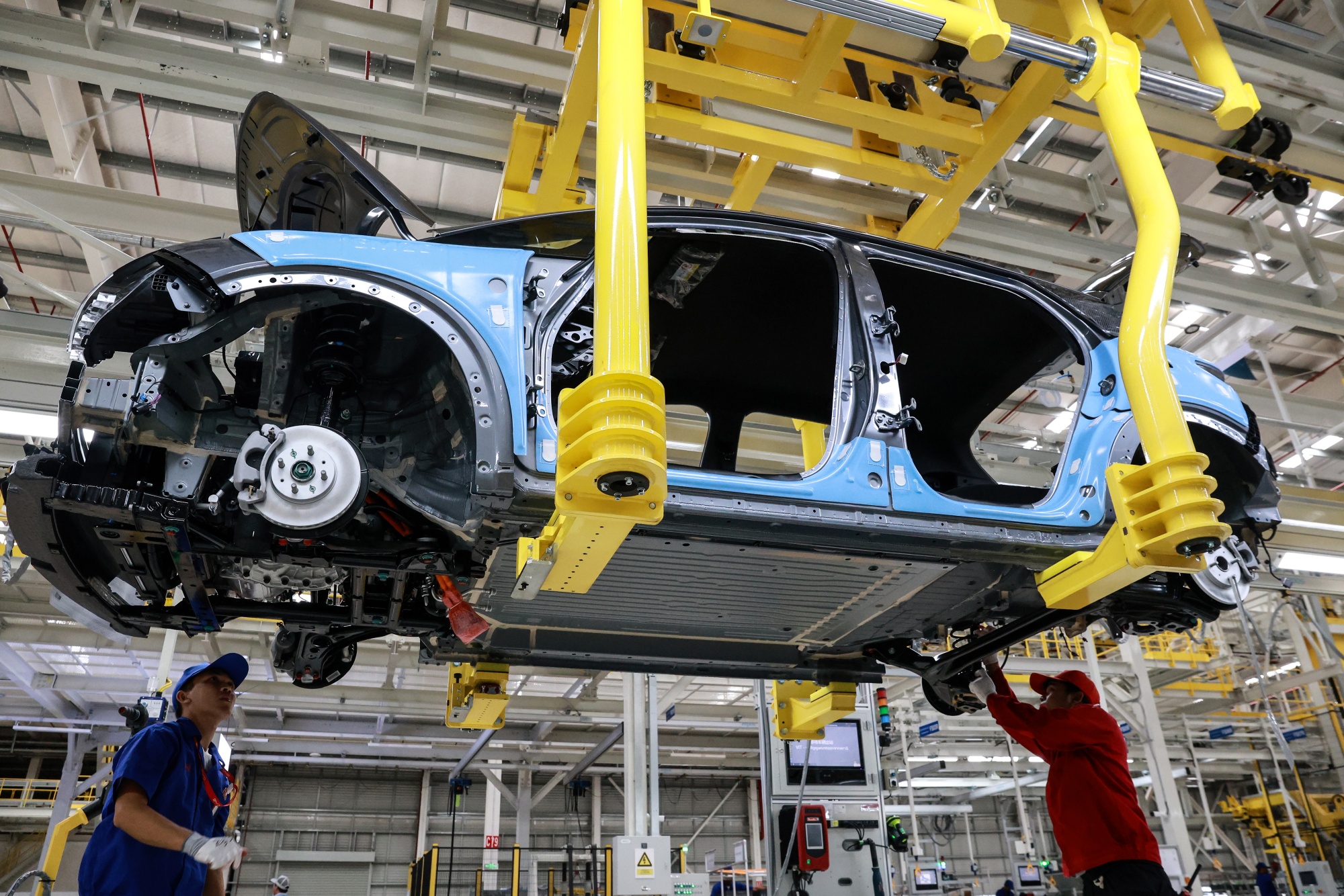ON A recent Thursday (Feb 27) morning in Hanoi, Chinese electric vehicle (EV) giant BYD began the day with a showroom devoid of customers. Just a few kilometres away, a dealership for upstart Vietnamese EV maker VinFast Auto was buzzing, with would-be buyers pouring over new models.
“We see an average of 20 customers every day during weekdays,” said Tran Trung Hieu, a VinFast salesman in a black suit and tie. “That can double or triple on a weekend.”
BYD’s entrance in July into Vietnam, whose youthful population is keen to buy electric and hybrid cars, underscores both the opportunities and challenges Chinese companies face as they seek to push into South-east Asia.
The region, where hundreds of millions of affluent consumers are looking to make better lifestyle choices, is an obvious landing point for Chinese automakers, cut off from the US due to punitive tariffs and at a competitive disadvantage in Europe for the same reason.
But early gains have given way to some harsh realities.
While South-east Asia’s upwardly mobile population may aspire to own EVs, the still-pricey cars are beyond the reach of many. Access to a reliable electricity source is not always a given and even if it were, EV charging infrastructure across many countries is spotty. And in some places such as Vietnam, consumers prefer a brand more immediately familiar.
A NEWSLETTER FOR YOU
Friday, 8.30 am
Asean Business
Business insights centering on South-east Asia’s fast-growing economies.
South-east Asia, which has around five million cars on its roads versus some 250 million motorcycles, is a far more complex market than China, said Ron Zheng, a partner at global consultancy Roland Berger GmbH. To crack the region, Chinese carmakers will need to navigate different cultures, languages and regulatory systems.
“There’s no doubt smart EVs will ultimately replace traditional internal combustion engine cars,” Zheng said. But it took China around five years of government-driven incentives before consumers started making the switch of their own volition and “you can reference that timeline to South-east Asia as well”.
Most of the region’s consumers are at least receptive to foreign brands – witness the historic popularity of Japanese automakers such as Toyota Motor. While their grip has weakened, Japanese companies, including Nissan Motor and Honda Motor, accounted for about 68 per cent of passenger car sales in South-east Asia in 2023. According to Roland Berger forecasts, Chinese carmakers’ share should rise to around 13 per cent by 2030, from 6 per cent in 2023.
Country-by-country though, the numbers show it will be a long slog.
EV sales in Indonesia were just 43,188 units last year, more than the mere 125 in 2020 but still only a fraction of the around 860,000 passenger cars sold in total, according to industry association Gaikindo. At those levels, it’s hard to see how the government’s target of three million EVs on Indonesia’s roads by 2030 can be met.
“Maybe the rich are more aware about EVs but not everyday people,” said Hairayani, a school teacher based in Jakarta who like many Indonesians only goes by one name. “Plus there’s the price factor and the extra hassle of finding a charging station,” Hairayani said he does not plan on moving away from his gas-powered car anytime soon.
In Thailand, where buyers benefit from a government subsidy of 100,000 baht (S$3,954) per vehicle, EV sales dropped 9.3 per cent to 66,732 units in 2024 from a year earlier, short of the Electric Vehicle Association of Thailand’s target of 80,000. Thailand has the highest level of household debt in South-east Asia and many consumers are now subject to stricter bank loan approvals.
Things did not improve in January, when sales of battery-powered EVs slipped almost 8 per cent year on year, Federation of Thai Industries data show.
The situation for Chinese EV makers is even tougher in places where there is a strong local incumbent, such as Vietnam.
VinFast, with its expanding network of proprietary charging stations and an entry-level mini EV that costs around US$11,700, is easily outselling Chinese rivals. Of the nearly 91,500 EVs sold in the country last year, more than 87,000 were VinFast models. However many of those sales were to VinFast-related parties, in particular the nation’s largest taxi service, Green and Smart Mobility, which is 95 per cent owned by VinFast founder Pham Nhat Vuong.
With almost 70 per cent of some 1,100 Vietnamese living in wealthier cities surveyed in July by KPMG saying they’d be inclined to make the switch to either an electric or hybrid vehicle, that gives BYD and other Chinese automakers an opportunity to strengthen their toe hold.
BYD has launched several models in Vietnam, with prices ranging from 659 million dong (S$34,847) to as much as 1.36 billion dong.
Winning over consumers will take some doing, however.
“It’s not practical to own a Chinese EV in Vietnam,” said Thinh Hanh, a 41-year-old Hanoi resident who came to the VinFast showroom to look for a VF 6 model with his brother. Thinh has been driving a VF 9 since 2023 and likes the high level of personalisation it provides that petrol cars could not offer. “There’s a lack of charging stations to suit Chinese cars.”
There’s also lingering reluctance to buy Chinese in light of historic tensions between the two Communist countries. “People are a bit concerned because this is a Chinese brand,” said Dong Hai, a salesman at Chery Automobile’s showroom in Hanoi. Chery does not have an EV on offer yet in Vietnam but plans to introduce one in the second quarter, he said.
Until consumer wariness fades and EV adoption gathers pace more broadly, Chinese companies are doing what they can to raise awareness.
Guangzhou Automobile Group’s subsidiary GAC Aion has booked advertising space on the huge billboards that greet travellers coming into Bangkok from Suvarnabhumi International Airport while BYD recently opened a showroom the size of a soccer field in downtown Jakarta.
Chinese automakers are also building production facilities across the region, such as BYD’s US$1.3 billion plant in Java in Indonesia that’s expected to start operations in January next year. Chery Automobile meanwhile has plans to build an EV factory in Rayong, Thailand that’s expected to commence production this year with an annual output of 50,000 vehicles.
South-east Asia will present “short-term turbulence” for Chinese EV makers, Roland Berger’s Zheng said. “The region will pose a pretty huge challenge in terms of actual operations, including logistics and mass production.” BLOOMBERG







